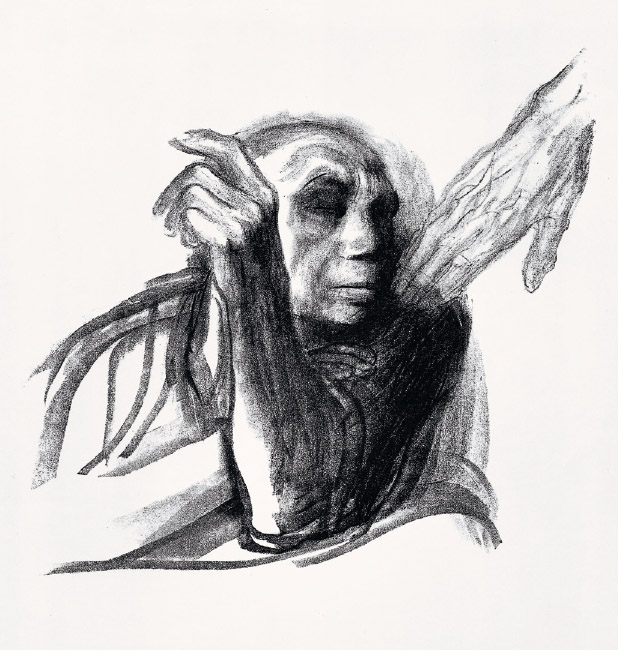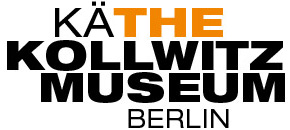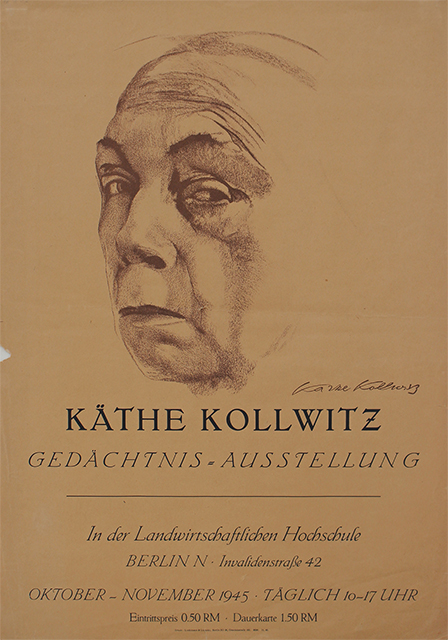
Käthe Kollwitz, Call of Death, sheet 8 of the series “Death”, 1937, lithography
Käthe Kollwitz died 79 years ago, on April 22, 1945.
Shortly before the end of the Second World War, Käthe Kollwitz died in Moritzburg near Dresden. She spent the last months of her life at the “Rüdenhof”, a manor house on the castle pond. The outbuilding of Moritzburg Castle offered her a safe haven from the never-ending war.
In her eventful life, Kollwitz had to experience the outbreak of two world wars and the Nazi era, with heavy personal losses: the First World War took her youngest son Peter, the Second World War her eldest grandson, who had been named after her uncle who died in 1914. The artist, who was committed to socio-political issues throughout her life, did not live to see Germany’s surrender on May 8, 1945.
In the turmoil of the last days of the war, news of the death of the famous artist only reached the public in July 1945. Käthe Kollwitz was initially buried in Moritzburg, but in late 1945, in accordance with her wishes, she was transferred to the family grave in Berlin’s Friedrichsfelde cemetery, where her husband Karl and her brother Konrad Schmidt were already buried.
Surprisingly quickly after the end of the war, exhibitions were held in the ruins of bombed-out cities to commemorate the deceased artist. One of the first and most extensive memorial exhibitions was held from October 22 to the end of November 1945 at the Agricultural College on Invalidenstraße in Berlin. On display was an impressive selection of drawings and graphic works by the artist. The exhibition catalog includes a total of 127 works that were collected during the post-war turmoil. It also contains a four-page foreword by an author with the initials C.L., which presumably refers to the art historian Carl Linfert (1900-1981). Linfert had been a correspondent for the arts section of the “Frankfurter Zeitung” in Cologne and Berlin since the 1920s, where he worked from 1936.
In his text, he characterizes the art of Käthe Kollwitz: “Her field is drawing and etching. And there the fixed theme immediately emerges: the inadequacy of life, the suffering of people. But suffering is never depicted to merely illustrate a situation. That is why the space that could surround people is completely missing. (…) Otherwise only the darkness can be felt; it oppresses and harbors at the same time. Faces peer, bent bodies wait, and heavy limbs struggle to get through. That is all.”
The organizer of the large Käthe Kollwitz memorial exhibition was the Magistrate of the City of Berlin. When it was constituted on May 17, 1945, a “Department for Public Education” was set up under the leadership of city councillor Otto Winzer. This department included a “Chamber of Artists”, headed by the actor Paul Wegener as president. The exhibition’s honorary committee consisted of renowned members such as the director of the National Gallery Ludwig Justi, the painter Karl Hofer and the sculptor Renée Sintenis.
Hans Pels-Leusden (1908-1993), the later founder of the Berlin Kollwitz Museum, also attended the opening of the exhibition. He wrote to his mother Elfriede on October 22, 1945:
” … Yesterday I went with Maritta in wonderful fall weather to the opening of a magnificent Käthe Kollwitz memorial exhibition. Käthe Kollwitz died this spring.”

